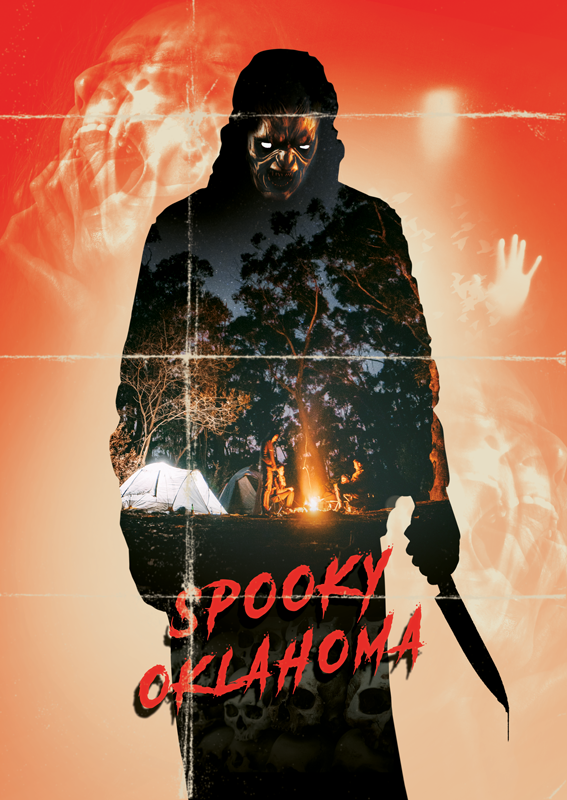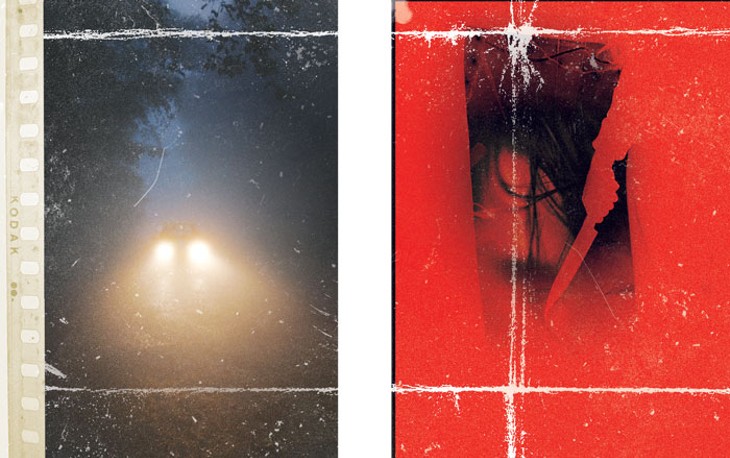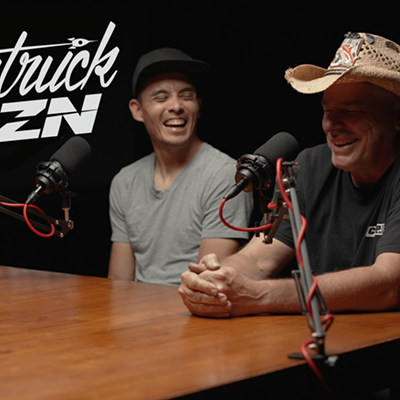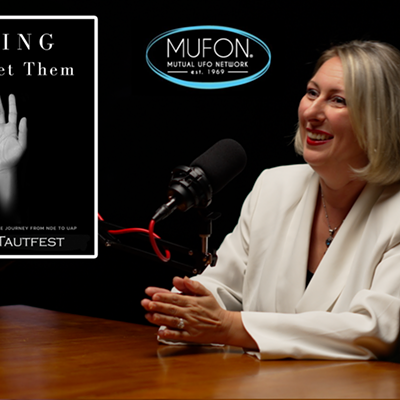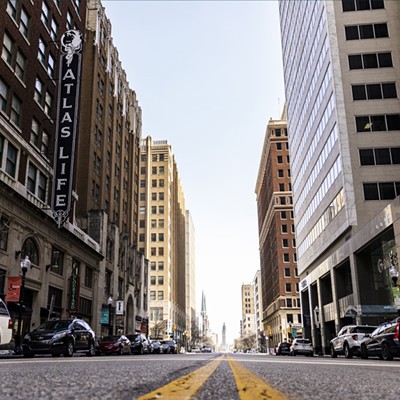While Oklahoma does not have the centuries of lore attributed to colonial America, there are plenty of bizarre places and occurrences in the state. Real or imagined? You decide.
Put on your hoodie and gather around the campfire as we explore some of the most popular bits of weird lore the Sooner State has to offer.
Our first location involves a unique phenomena that anyone can replicate at any time of the day or night. Magnetic Hill near Springer in Carter County (Pit Road) should be a pit stop the next time you head to the southern part of the state, as it’s only about a mile west of Interstate 35 about 10 miles north of Ardmore. Drive to the bottom of the hill, put your car in neutral and take your foot off the brake. You’ll feel your vehicle slowly start to pull itself backwards … up the hill. Be careful though. It’s an open, public road and your vehicle can accelerate into double-digit speeds.
Locals attribute the phenomena to a number of origins, including the victims of fatal crashes pushing you away from the scene of their demise and also that the spirits of people hanged at a tree in the area are forcing you away from their final resting place.
Another creepy spot is Spook Light Road in Peoria near the Missouri state line. The road is eponymously named for the famed “Spook Light,” or floating orbs that can sometimes be seen lighting up the heavy woods that line the thoroughfare. Legend has it that the lights are the lanterns carried by miners who were decapitated in an unfortunate accident in the area. Another legend is that they are spirits of Civil War soldiers traversing the area.
In the Panhandle, the area with the most reports of paranormal activity in the state is Beaver Dunes State Park. Known as “Oklahoma’s Bermuda Triangle” or “Shaman’s Portal,” reports of strange occurrences in the desert park are numerous and describe various phenomena from UFOs to unexplained disappearances.
Native Americans reportedly warned Coronado of the area, which they dutifully avoided, in the 1500s, but that didn’t stop them. A number of the pre-American gold prospectors reportedly went missing and were never seen or heard from again. According to journal entries from a friar who went with the explorers, the men went wandering towards a mysterious green light before they vanished.
“It was the work of El Diablo,” friar Juan De Padilla reportedly wrote. “That night by the sandy hills we had been warned by the natives to avoid, lost we three able bodied men of valor: Juan Viscaino, Marco Romano, and Juan Munoz. They had been hunting game for the men when the three fated soldiers were taken from us in a lightning bolt of green.”
Centuries later, it is rumored to have been the location of a UFO crash site and many locals report “men in black” chasing away archaeologists and soil collectors (some of whom reportedly found high levels of ionization and electromagnetic activity in samples) from the area, which according to another legend is actually the site of indigenous burial grounds. The state’s tourism department doesn’t mention any of these things on their official listing for the state park, however.
Closer to Oklahoma City, the “Purple Church” is rumored to have existed in eastern Oklahoma County for decades. Though its location has never been precisely determined, some say that is is just off NE 23rd. One pre-YouTube video showed an expedition into an underground alcove complete with Satanic graffiti and the remains of animals. The stuff of nightmares for high school students at the turn of the century, the Purple Church was reportedly the location of many human and animal sacrifices for devil-worshippers, including famed killer Sean Sellars.
The outdoors are far from the only locations with reports of supernatural occurrences. There are several reported haunted dwellings within the Oklahoma City metro.
Carey Place is a short and extremely narrow passage that runs through the center of the Gatewood neighborhood just north of the Plaza District. Now gentrified and quaint, the strip is the site of one of the city’s most recounted urban legends.
The street is reportedly named after a girl named Carey, who lived in a house on the block with hatchets carved into its shutters. The sight of those shutters reportedly drove a man mad and he abducted little Carey, chopping the girl into pieces using a hatchet just like those found on the shutters. Once upon a time, the driveway of the house was also reportedly painted blood red because the stains of her blood refused to be scrubbed from the pavement. Some even say the little girl can be seen on occasion, sobbing on a swing similar to the one she had been kidnapped from and slaughtered.
The Overholser Mansion, near downtown Oklahoma City, is also reportedly the site of a benign haunting. The home’s architecture is intact and many of the Overholsers’ belongings were left behind, creating an eerie time capsule of a bygone area in the heart of the city. Henry Overholser reportedly died on the second floor of the home, though not by any nefarious circumstances, and members of the family are said to be haunting the home, especially during the autumnal months. Reports of moving shadows and footsteps in the mansion are not uncommon, and the laughter of an unknown little girl has been reported as well. The mansion was re-opened for tours, including the second floor, on Oct. 1.
The Skirvin Hotel in downtown Oklahoma City opened in 1911 and was closed in 1988. Since its restoration and reopening, there have been scores of reports of otherworldly incidents of one its oldest inhabitants, “Effie.”
Effie was reportedly a mistress of oilman W.B. Skirvin and was locked in a room on the top floor of the hotel once she became pregnant. However, after giving birth, it is said that she was still not allowed to leave the room and during a psychotic break, pitched herself with her infant in arms through the window and to the concrete below. Not only are the child’s cries still heard in the hallways of the century-old hotel but Effie is still seen running towards a top-floor window. Other guests have reported seeing a maid’s cart moving on its own, phantom knocks on doors and drawers opening on their own. NBA players from several cities have recounted visits from the otherworldly woman, sometimes nude or attempting to communicate with them. It should be noted that the existence of Effie and her baby have never been documented, in this life or in any other.
Perhaps the most infamous home of the state is in Tulsa. Dubbed the “Hex House,” 5610 W Skelly Drive rose to infamy during World War II when small caskets were found buried in the backyard. Inside the caskets were the remains of two dogs, but an investigation into the home revealed two women who claimed to have been “hexed” and turned into financial slaves of the woman who owned the home. She was later sentenced to prison for inducing the two women to testify against a neighbor and for claiming war rations in the name of her bulldog. Nevertheless, the often-exaggerated backstory for the home has allowed it to become a celebrated attraction that has since been converted into a haunted house amusement that opens every October.
While Oklahoma’s lakes are all man made, its woods are very natural and for decades reports of a Bigfoot have surfaced in Honobia, near the Arkansas state line.
Oklahoma ranks in the nation’s top ten per capita for the number of reported Bigfoot sightings, almost all of which occur in or near Adair County, near Tulsa, and Le Flore County in southeastern Oklahoma. Each year in March, the Mid-America Bigfoot Research Center puts on the Oklahoma Bigfoot Symposium in Stilwell, the Adair County seat. In early October, Honobia in Le Flore County hosts its Bigfoot Festival (which was canceled in 2020 during to COVID-19, but is slated to return next year). While most of the evidence presented at both has been debunked, you’ll find a host of people at each who will regale you with first-hand accounts of their encounters with the large primates in the wilds of their respective necks of the woods.
Sometimes, headstones are all that remain of some of the state’s creepiest legends. Take for instance the story of Katherine Cross.
Cross, who is buried in Konawa, died at the age of 18 years old. Her tombstone reads: “Murdered by human wolves.” Legend has it that Cross’s epitaph is a reference to the fact that she was killed by werewolves, though others posit that she died as a result of an attack by the Ku Klux Klan or was the victim of a botched abortion.
Elmer McCurdy’s body now rests in a plot at Summer View Cemetery in Guthrie, but his body traversed the country as a sideshow attraction for decades before being laid to rest. McCurdy, a bank and train robber, was shot and killed by a sheriff’s posse following a botched train robbery near Okesa. His body was embalmed in Pawhuska, where two carnies who claimed to be McCurdy’s brothers showed up and took possession of the body. For decades, McCurdy’s embalmed corpse traveled across the county, eventually ending up in The Pike boardwalk in Long Beach, California before being placed into storage. A crew member on the set of a shoot of The Six Million Dollar Man broke off what was thought to be an arm of a wax mannequin, but bone and muscle were revealed. After an autopsy confirmed that the body was indeed human and belonged to McCurdy, he was returned to the state where he was interred after a funeral in 1977. He is buried next to another infamous outlaw, Bill Doolin, the founder of The Wild Bunch. In order to make sure McCurdy finally stayed at rest, his coffin was entombed within two feet of concrete.
There are many other incidents of Oklahoma weirdness, including a Shawnee serial killer in the 1930s, the Lawton wolfman and the haunted “black jail” in Guthrie, but those are tales for another time...

